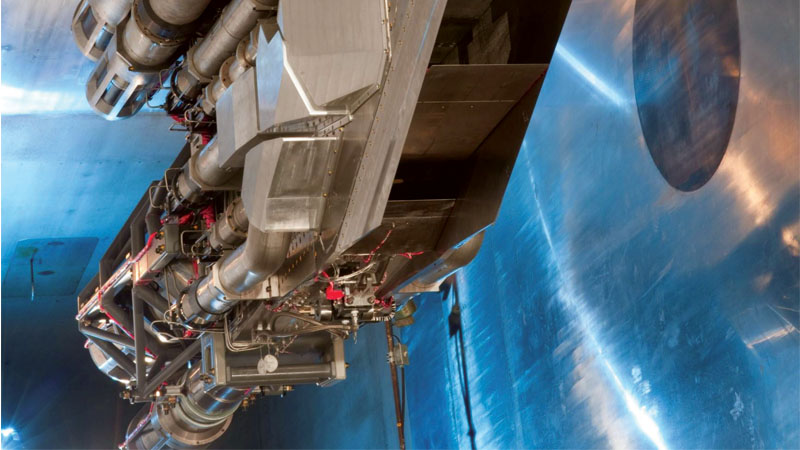Luxury ecotourism airship images excite media
By Alan Farnham|December 2018
The Lighter-Than-Air Systems Technical Committee stimulates development of knowledge related to airships and aerostats for use in a host of applications from transportation to surveillance.
The highest-profile airship in the world, Hybrid Air Vehicles’ Airlander 10, scored a public relations coup at the Farnborough International Airshow in July — a remarkable achievement considering the craft had accidentally been destroyed eight months earlier.
Like its rival, Lockheed Martin’s LMH-1, Airlander 10 is a hybrid airship, meaning it derives part of its lift from helium and the rest from aerodynamics. On the morning of Nov. 18, 2017, however, it derived lift from neither. Sitting uncrewed on the ground at its base in Cardington, England, a gust of wind detached it from its moorings, triggering an automatic deflation system that resulted in damage so significant as to render Airlander beyond repair. The company is moving forward with the design of a production model. In October, the European Aviation Safety Agency awarded Hybrid Air Vehicles, or HAV, a Design Organization Approval, which gives it permission to undertake a flight test program leading to type certification.
HAV at Farnborough displayed artists’ conceptions of what Airlander 10’s cabin might look like configured for luxury ecotourism. Depicted amenities included a glass-floored observation lounge, a bar and private bedrooms for 20 travelers. The images received media coverage wider and more positive than any airship-related development in decades. HAV attributes the response to public interest in green air travel. Quiet, fuel-efficient airships could indeed allow travelers to reach remote, environmentally sensitive destinations, while leaving a carbon footprint smaller than that of any other aircraft. Airships’ large surface areas, combined with recent advancements in photovoltaic coatings and lightweight batteries, mean that solar, all-electric propulsion should be a near-term reality.
In September, France’s Hybrid Air Freighters and Oregon’s Columbia Helicopters announced they jointly will operate up to 12 Lockheed Martin LMH-1 hybrid airships, which Hybrid Air Freighters had in 2017 agreed to buy. The partners expect to have their first LMH-1 in service in 2020 or 2021 to industrial clients needing the airship’s 20-ton lift capability.
In August, Goodyear christened the third and last of its Zeppelin NTs “Wingfoot Three.” At its base in Carson, California, in December 2017, Goodyear erected an inflatable hangar — the largest structure of its kind in North America — made by Lindstrand Technologies.
Shaanxi Geotime General Aviation Co. of China in June unveiled a 26-passenger rigid airship intended for domestic tourism, the GTGA-K9000. Separately in 2018, China’s Ministry of Science and Technology and conglomerate Aviation Industry Corp. of China became lead investors in Flying Whales, a French company that has raised more than $246 million to build a 500-foot rigid airship with hybrid electrical propulsion. The LCA60T would carry 60 tons of timber or other outsized cargo. Flying Whales plans an initial public offering for 2021, to coincide with the flight of its first prototype.
In August, Brazilian aerostat-maker Altave demonstrated a new version of its tethered military surveillance balloon, Horizonte, at Brazilian army headquarters in Brasilia. The company also received a U.S. patent for a portable, lightweight winching and anchoring system for tethered aerostats.
Though large new deposits of helium were discovered two years ago in Tanzania, they have not yet come to market. In 2018, world demand (8 billion cubic feet) exceeded supply, and helium’s price hit an all-time high of $119 per 1,000 cubic feet.
On Aug. 10, the 150th anniversary of the birth of Dr. Hugo Eckener, the “Magellan of the Air” and skipper of the Graf Zeppelin’s around-the-world flight of 1929, a Zeppelin NT overflew his grave in Germany.
Photo: Artists’ conceptions of amenities that passengers might someday enjoy aboard an ecotourist luxury airship went viral in 2018. Depicted here: the glass-bottomed observation lounge of Hybrid Air Vehicles’ Airlander 10, as imagined by English design consultancy Design Q. Credit: Hybrid Air Vehicles and Design Q



































